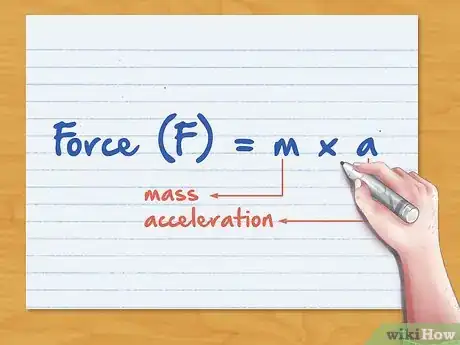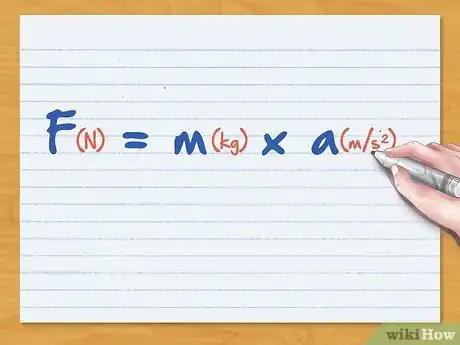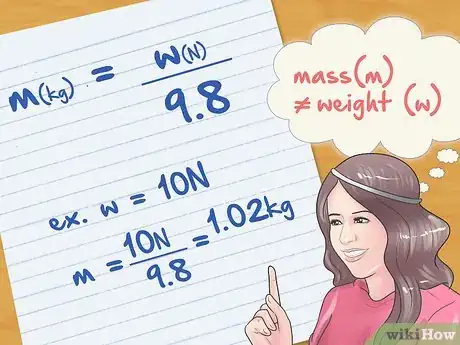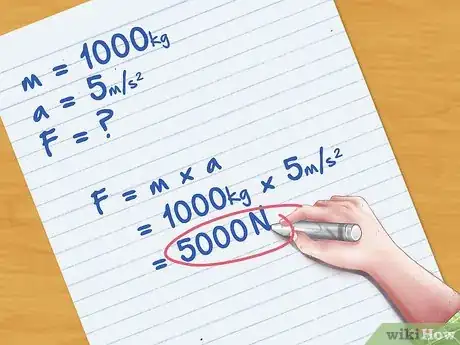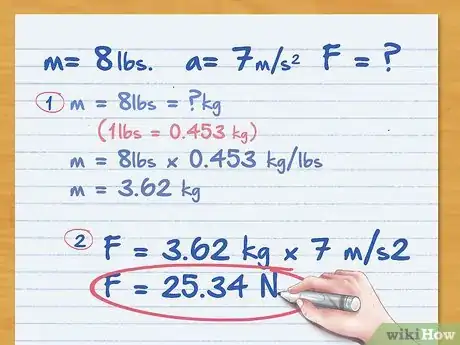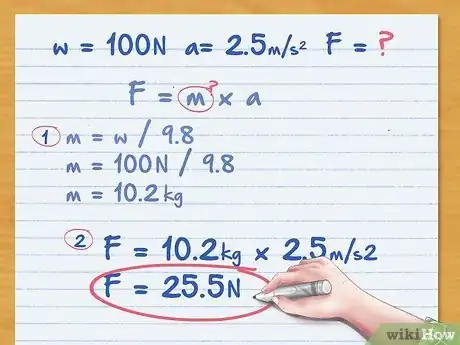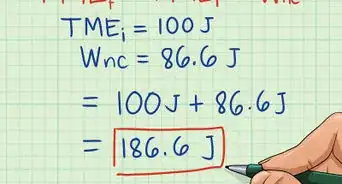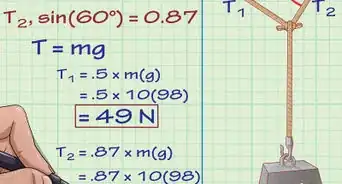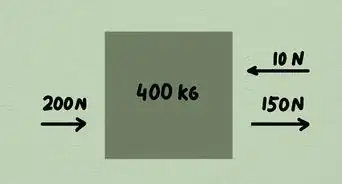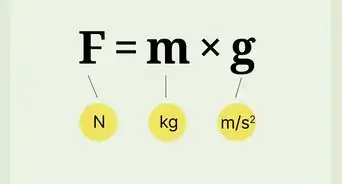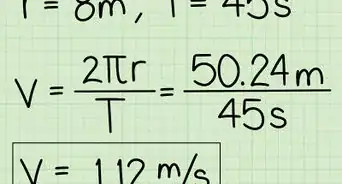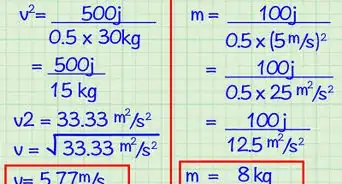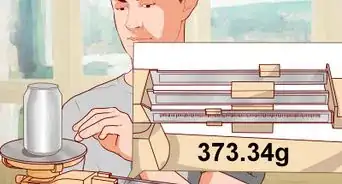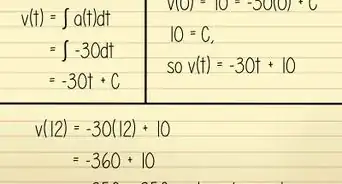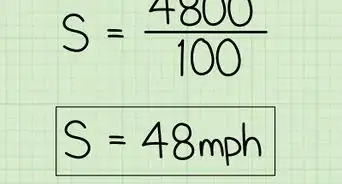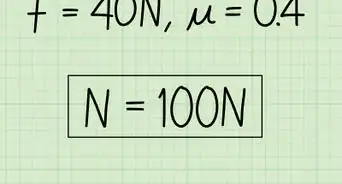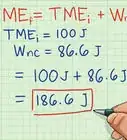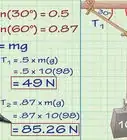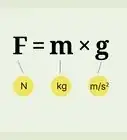wikiHow is a “wiki,” similar to Wikipedia, which means that many of our articles are co-written by multiple authors. To create this article, 32 people, some anonymous, worked to edit and improve it over time.
There are 7 references cited in this article, which can be found at the bottom of the page.
This article has been viewed 1,377,132 times.
Learn more...
Force is the "push" or "pull" exerted on an object to make it move or accelerate. Newton's second law of motion describes how force is related to mass and acceleration, and this relationship is used to calculate force. In general, the greater the mass of the object, the greater the force needed to move that object.[1]
Steps
Learning the Formula
-
1Multiply mass times acceleration. The force (F) required to move an object of mass (m) with an acceleration (a) is given by the formula F = m x a. So, force = mass multiplied by acceleration.[2]
-
2Convert figures to their SI values. The International System of Units (SI) unit of mass is the kilogram, and the SI unit of acceleration is m/s2 (meters per second squared). So when mass and acceleration are expressed in their SI units, we get the force in its SI units which is N (Newtons).[3]
- As an example, if the mass of the object is given to be 3 pounds, you'll need to convert those pounds to kilograms. 3 pounds make 1.36 kg, so the mass of the object is 1.36 kg.
Advertisement -
3Keep in mind that weight and mass mean different things in Physics. If the weight of an object is given in N (Newtons), then divide it by 9.8 to get the equivalent mass. For example, 10 N weight is equivalent to 10/9.8 = 1.02 kg.[4]
Using the Formula
-
1Find the force that is required to accelerate a 1,000 kg car at 5 m/s2.
- Check to make sure all your values are in the correct SI unit.
- Multiply your acceleration value (1000 kg) by 5 m/s2 to calculate your value.
-
2Calculate the force required for an 8 pound wagon to accelerate at 7 m/s2.
- First, convert all your units to SI. One pound is equal to .453 kg,[5] so you'll need to multiply that value by your 8 pounds to determine the mass.
- Multiply your new value for the mass (3.62 kg) by your acceleration value (7 m/s2).
-
3Find the magnitude of force acting upon a cart weighing 100 N and accelerating at the rate of 2.5 m/s2.
- Remember, 9.80 N is equal to 1.00 kg.[6] So, convert Newtons to kg by dividing by 9.8 kg. Your new kg value should be 10.2 kg for the mass.
- Multiply your new mass value (10.2 kg) times the acceleration (2.5 m/s2).
Community Q&A
-
QuestionHow do I change Newtons into mass?
 TiagorothCommunity AnswerThe formula for force is force = mass * acceleration. To find mass, simply divide the force by the acceleration.
TiagorothCommunity AnswerThe formula for force is force = mass * acceleration. To find mass, simply divide the force by the acceleration. -
QuestionIs force the same as weight?
 Community AnswerWeight is a force. When a force is due to gravity, it can be called "weight". "Weight" is only a human distinction for a specific case.
Community AnswerWeight is a force. When a force is due to gravity, it can be called "weight". "Weight" is only a human distinction for a specific case. -
QuestionWhat is the acceleration of a 130 kg object push by a man with 650 newtons of force?
 Community AnswerYou will need to know the formula of acceleration, once you know that. You can easily get the acceleration. So by using this formula, you can figure out what acceleration. It is simply just Algebra in this case. Formula: f/m=a
Community AnswerYou will need to know the formula of acceleration, once you know that. You can easily get the acceleration. So by using this formula, you can figure out what acceleration. It is simply just Algebra in this case. Formula: f/m=a
References
- ↑ https://www1.grc.nasa.gov/beginners-guide-to-aeronautics/newtons-laws-of-motion/
- ↑ https://www.omnicalculator.com/physics/force#how-to-find-force
- ↑ https://www.bbc.com/bitesize/guides/zgv797h/revision/3
- ↑ https://www.grc.nasa.gov/www/k-12/aerosim/LessonHS97/Massconv.html
- ↑ https://www.rapidtables.com/convert/weight/pound-to-kg.html
- ↑ https://www.unitconverters.net/force/newtons-to-kg.htm
- ↑ https://www.grc.nasa.gov/www/k-12/airplane/newton.html
About This Article
To calculate force, use the formula force equals mass times acceleration, or F = m × a. Make sure that the mass measurement you’re using is in kilograms and the acceleration is in meters over seconds squared. When you’ve solved the equation, the force will be measured in Newtons. Now, simply plug the values you know into the equation and solve. If you need to find acceleration, find the difference between the start and final velocity and divide them by the time difference. If you want to learn how to convert weights to mass for your equation, keep reading the article!
